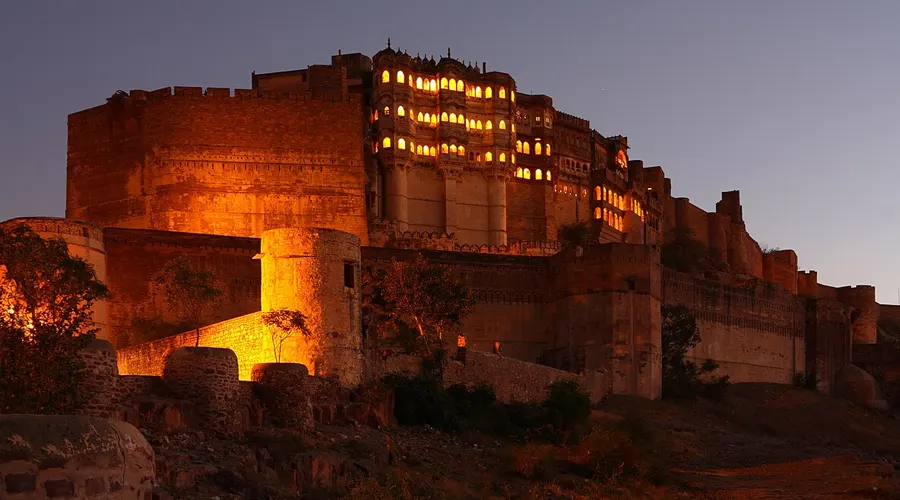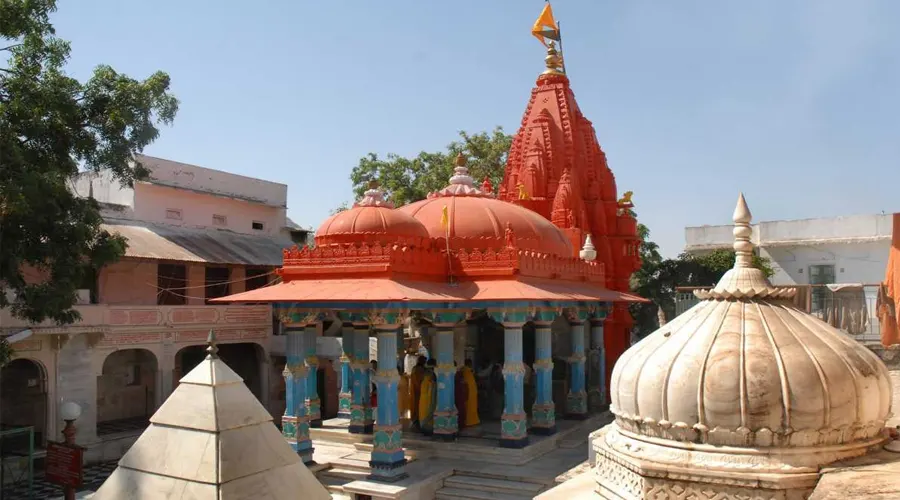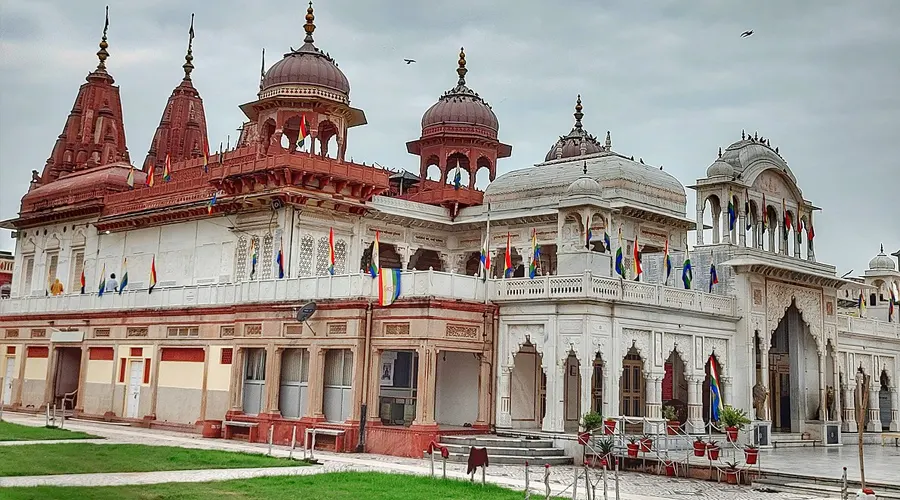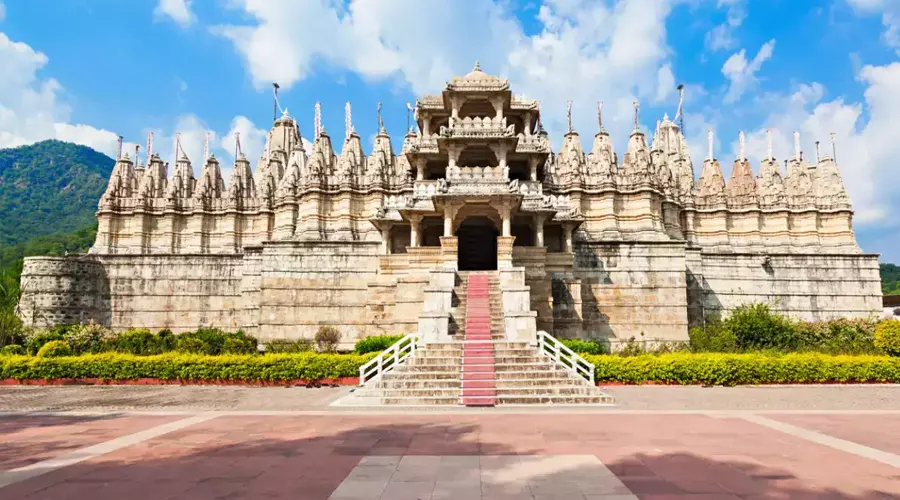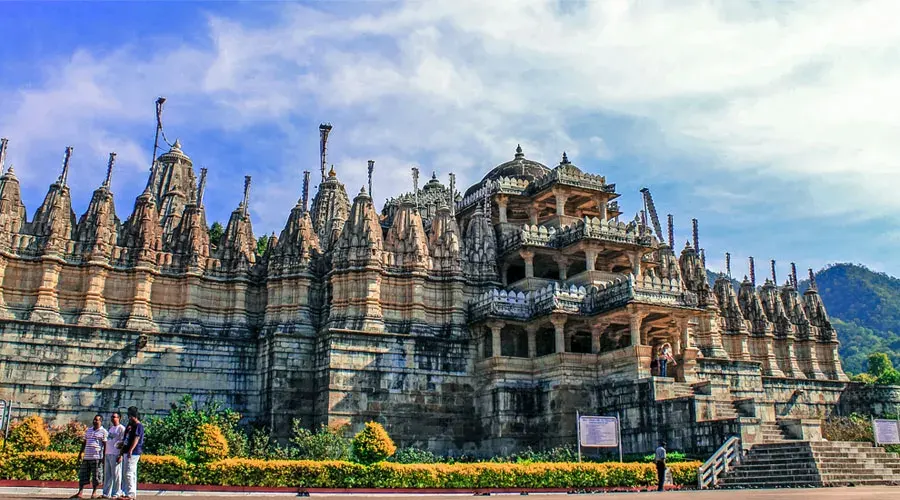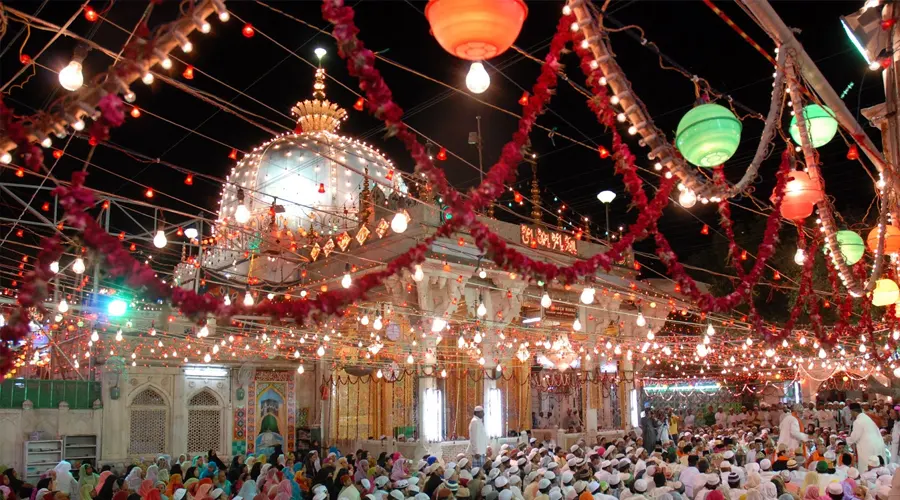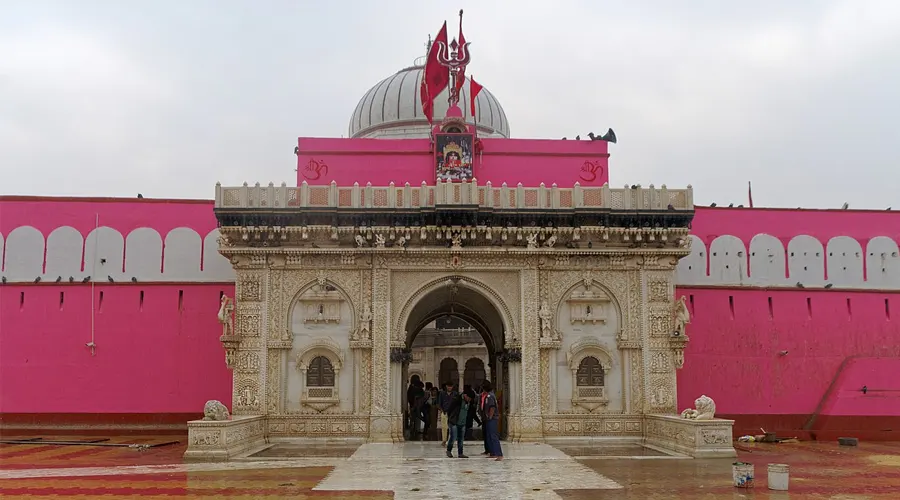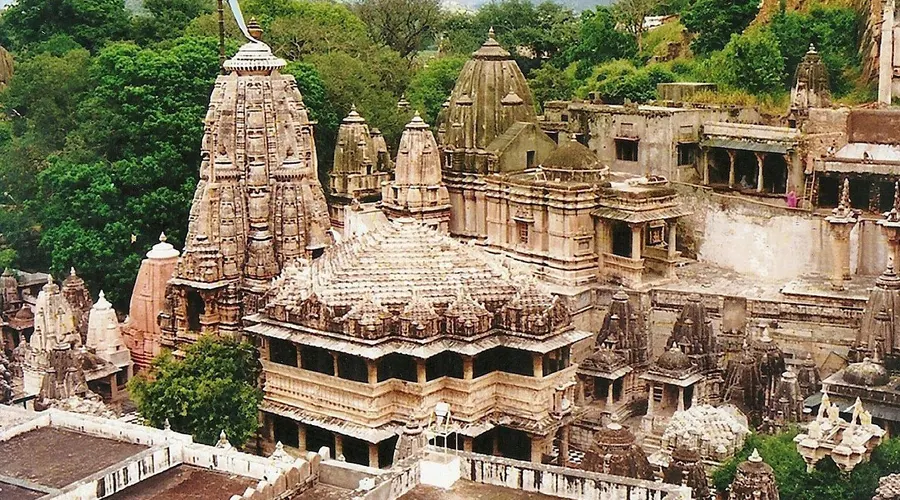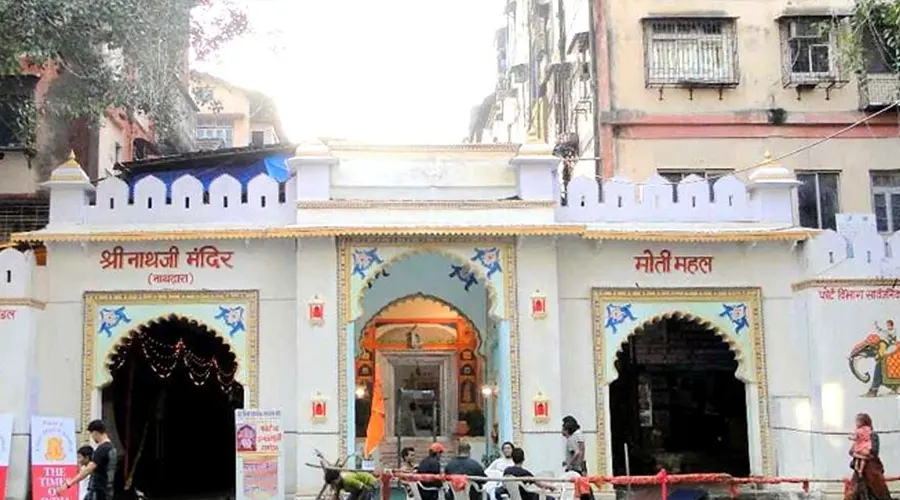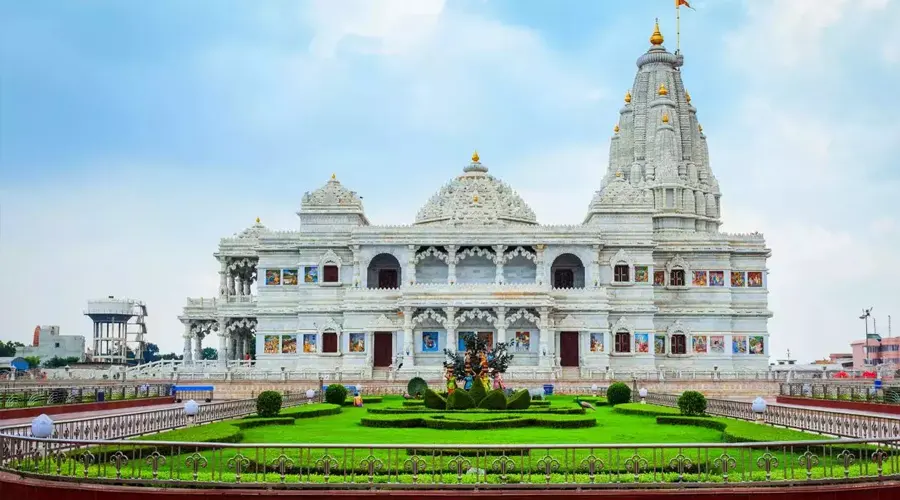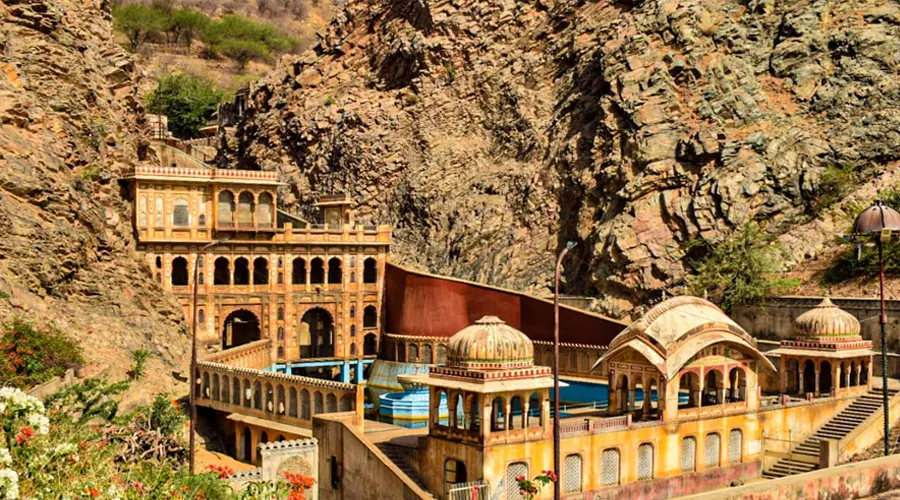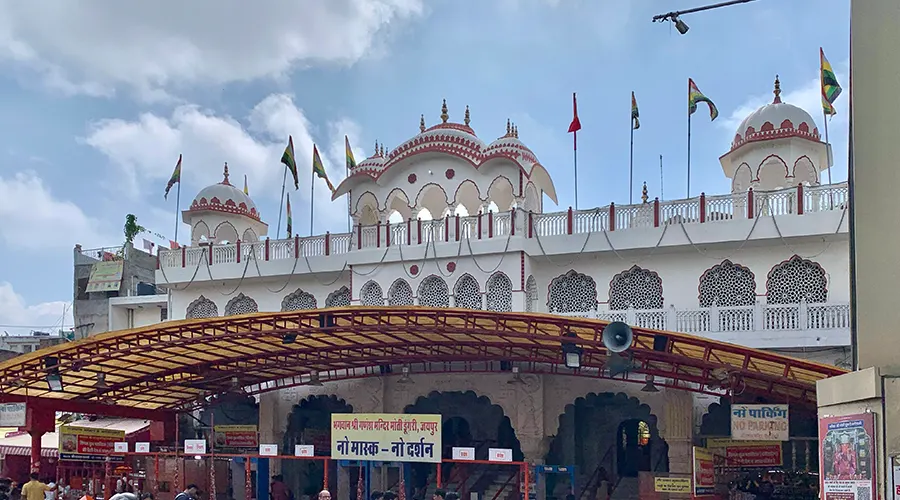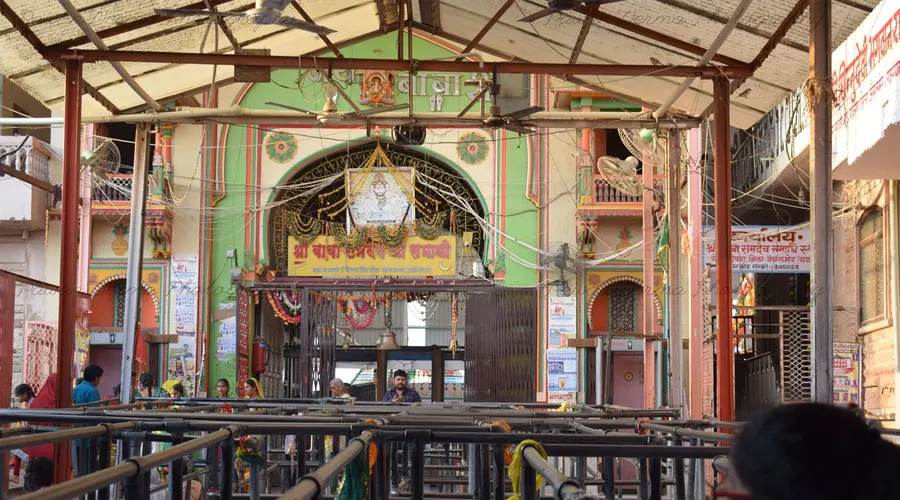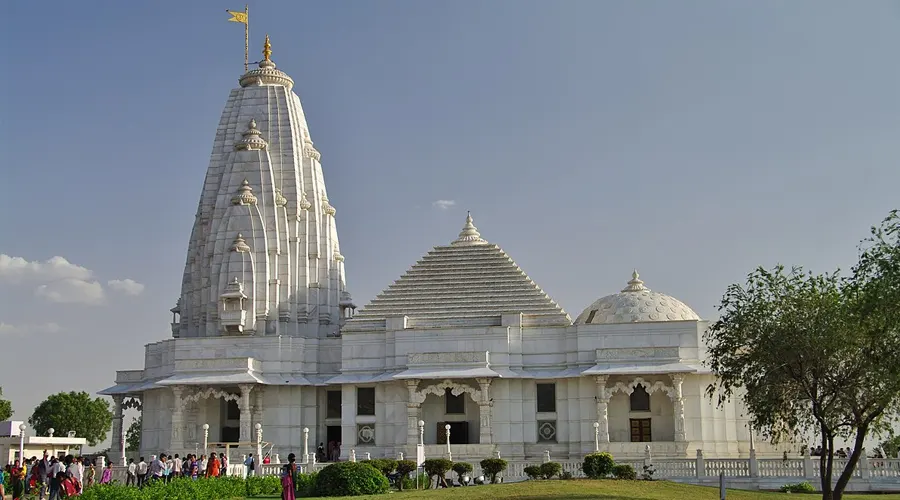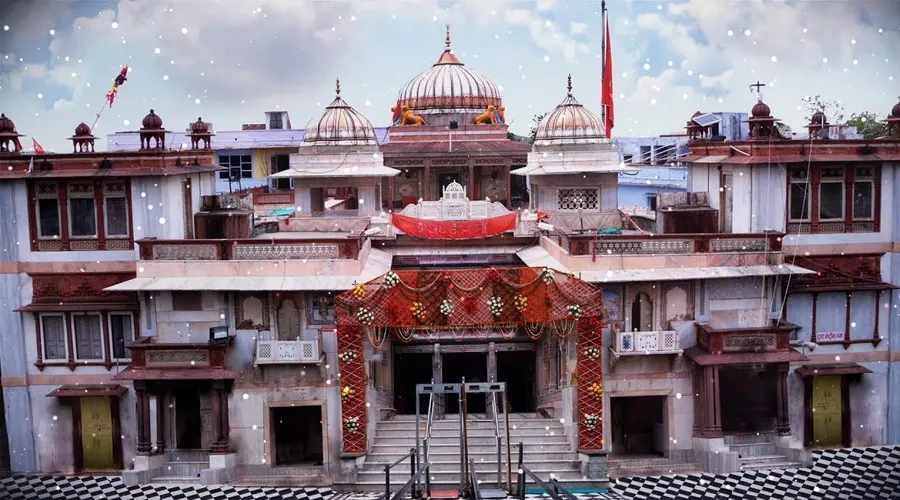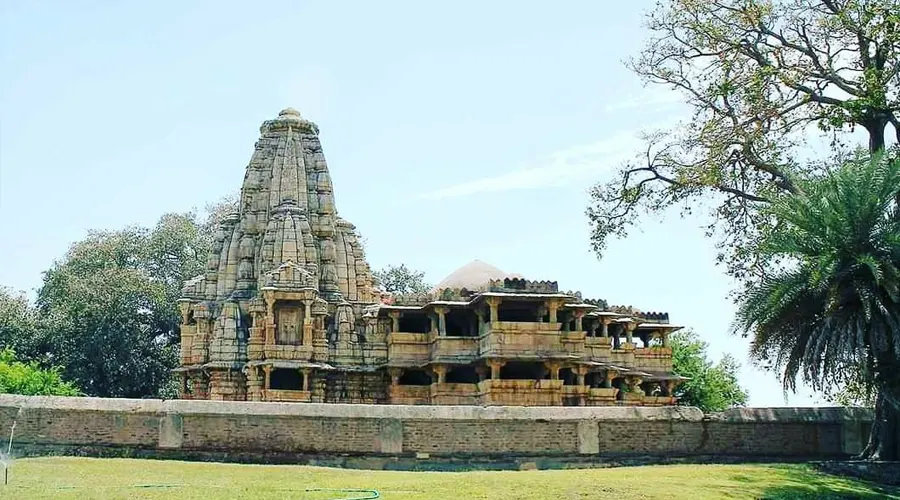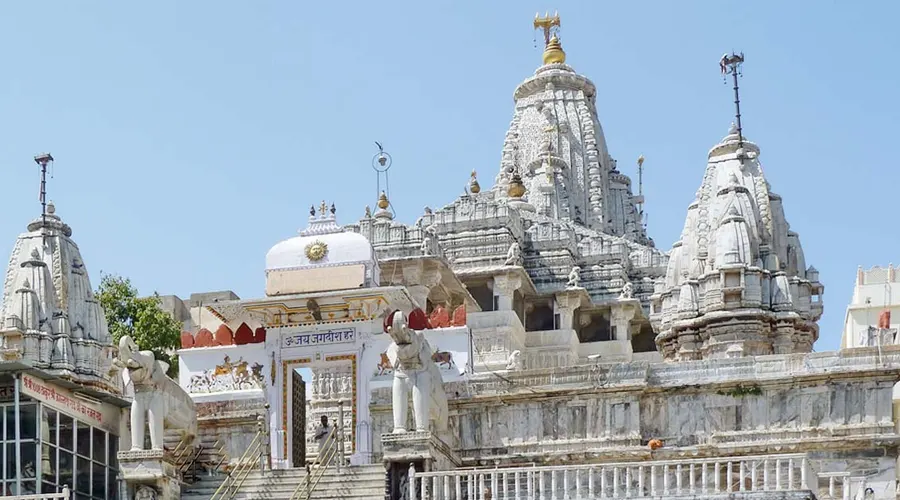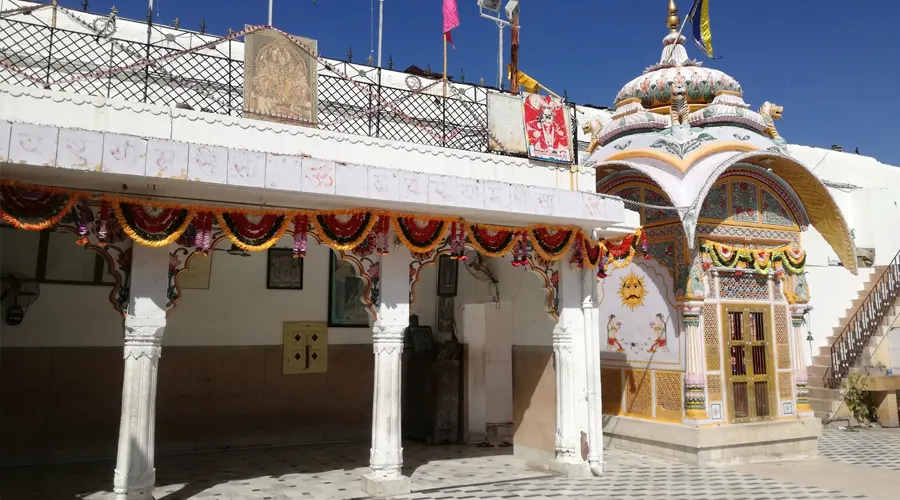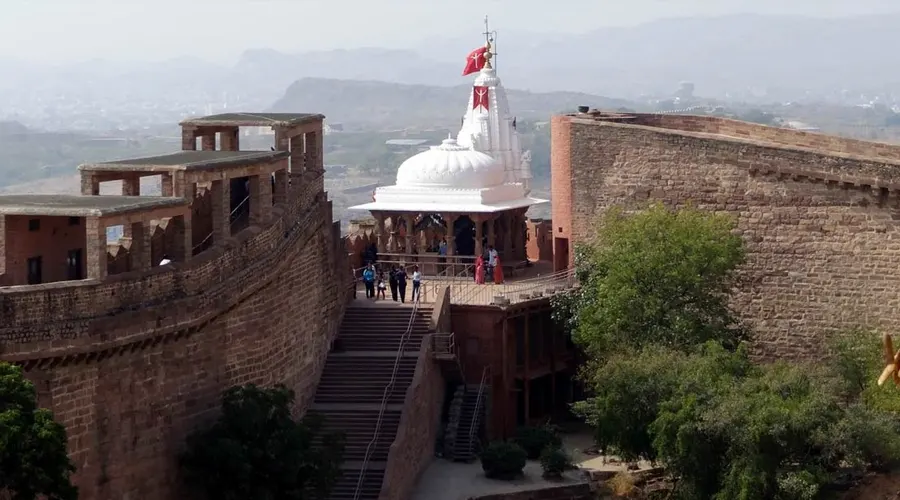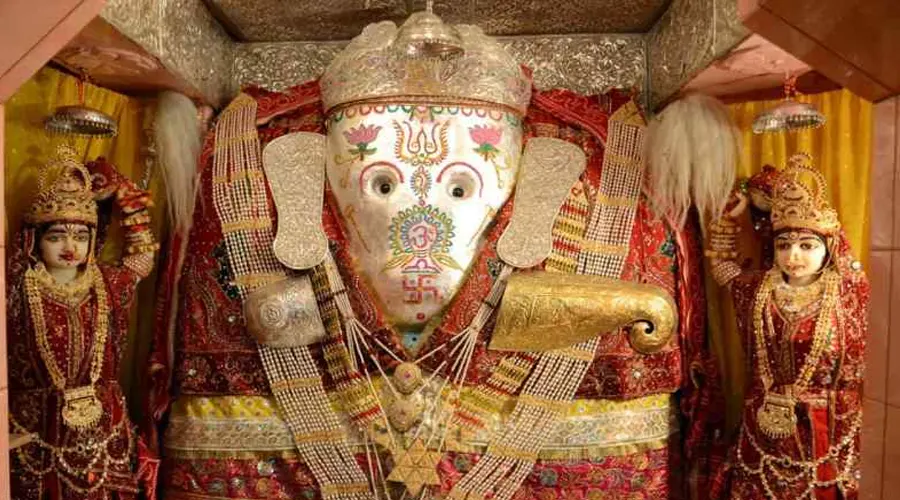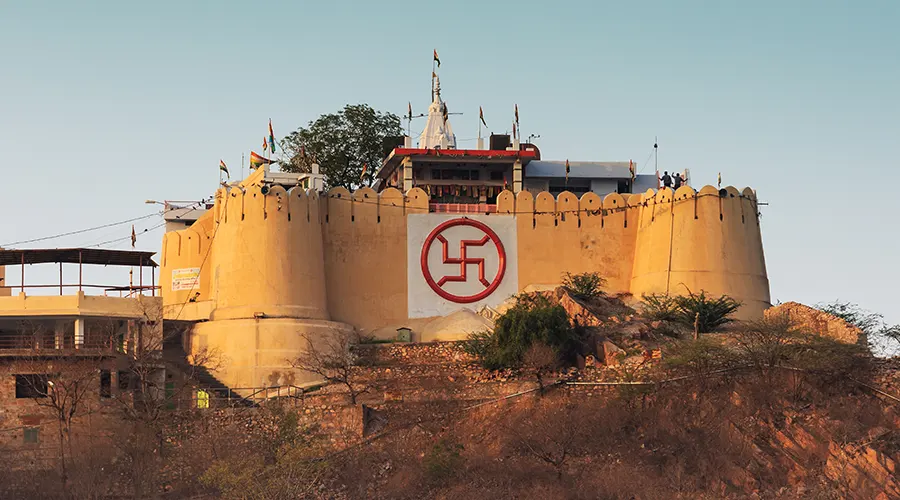Mehrangarh Fort
Mehrangarh, also known as Mehran Fort was built by Rao Jodha in 1459 in Jodhpur, and is one of the largest forts in the country. It is situated at the top of a 410-foot elevated hill and guarded by massive walls. One of the most easily recognizable forts in Jodhpur, it has appeared in many Hollywood and Bollywood productions such as The Lion King, The Dark Knight Rises, and the more recent - Thugs of Hindustan.
The entrance of the fort, atop a hill, is majestic and has seven gates. These are called Victory Gate, Fateh Gate, Gopal Gate, Bhairon Gate, Dedh Kamagra Gate, Marti Gate, and finally Loha Gate. Each of these was built at different times and serves a very specific purpose.
While one still has marks of cannon balls being hit on it, the other has spikes that can protect it from elephant and animal attacks. However, the Victory Gate was built to commemorate the win of Maharaja Man Singh over the Jaipur and Bikaner armies. The fort also has opulent palaces such as the Sheesh Mahal (Glass Palace) and Phool Mahal (Rose Palace).
The intricate carvings on the walls of the fort, the sprawling courtyards, its impressive history, striking palaces, museums, and galleries allure tourists from all over the world. The fort also has one of the well-stocked museums of Rajasthan. There are six different galleries in the Mehrangarh Museum: Elephant's Howdahs, Palanquins, Daulat Khana, Armoury, Paintings, and the Turban Gallery. National Geological Monument, Nagnecha Mataji Temple, Chamunda Temple, and Rao Jodha Desert Rock Park are the tourist attractions in Mehrangarh Fort.
History of Mehrangarh Fort
The interesting history of Mehrangarh Fort takes us back to the time when Rao Jodha, the 15th Rathore ruler founded Jodhpur in the year 1459. Son of Raja Ram Mal, Rao Jodha ruled the city from Mandore but shifted his capital to Jodhpur. He, then, laid the foundation of the fort on Bhaucheeria Hill which was just 9 km away from Mandore.
The Fort was named Mehrangarh Fort since the chief deity of Rathores was the Sun and the meaning of ‘Mehran’ is the sun. Apart from the major construction, many more additions were made by the other rulers of Jodhpur like Maldeo Maharaja, Ajit Singh Maharaja, Takhat Singh, and Maharaja Hanwant Singh. There were many clashes between the rulers at those times, and then the Fort like this one was an object of great power and prestige.
Architecture of Mehrangarh Fort
The Fort and palaces were built over 500 years, and thus one can see the basic architectural style of the mid-15th century along with the features of 20th-century architecture. The fort is 68ft wide and 117 ft. Long walls were overlooking the surrounding areas. It has seven gates, and the most popular one among them is the Jayapoli.
The architecture of the fort went through several developments over 500 years. During the rule of Maharaja Ajit Singh, many buildings of the fort were constructed in Mughal design. Besides the seven gates that leave tourists awestruck, there are several brilliantly crafted rooms like Moti Mahal (Pearl Palace), Phool Mahal (Flower Palace), Daulat Khana, Sheesh Mahal (Mirror Palace), and Sileh Khan. Moti Mahal, or the Pearl Palace, was built by Raja Sur Singh.
Sheesh, Mahal, or the Hall of Mirrors is famous for intricate designs on the pieces of mirrors. Maharaja Abhaya Singh created Phool Mahal. One can see the magnificent craftsmanship of Jodhpuri craftsmen in the sandstone used for the construction of the palace.
Sheesh Mahal
A characteristic feature of the royal Rajput architecture, the Sheesh Mahal in the Mehrangarh Fort of Jodhpur is a treat to the eye of the beholder. Also known as the Glass Palace of Jodhpur, this marvelous piece of architecture is decked from ceiling to floor with intricate mirrorwork. These decorative ornaments are complemented well with the brightly colored paintings of various religious figures made in plaster.
The numerous decorative panels show deities like Lord Brahma, Lord Shiva and Parvati, Lord Krishna playing the flute, and Lord Rama among others showing the strong influence of religion and culture on the art of the time. The ceilings and floors are inlaid with mirrors, earning the room the title of Hall of Mirrors.
The blue, green, silver, and gold ornaments suspended on the ceiling as well as the grand European chandelier are later additions to this hall. Mehrangarh's Sheesh Mahal was the bed-chamber of Maharaja Ajit Singh who reigned over Jodhpur between 1679 and 1724.

